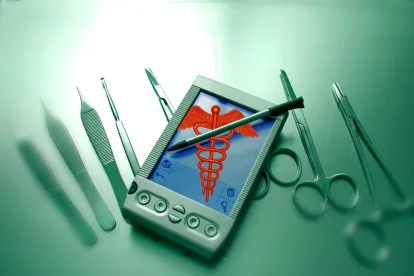A flurry of regulatory activity preceded the transition in administration on January 20.
Anticipating that the new administration would impose a regulatory slowdown, the Food and Drug Administration’s (FDA’s or the Agency’s) Center for Devices and Radiological Health (CDRH) issued more than a dozen draft and final guidances from December to January 19. These guidances address a wide range of topics, including investigational device exemptions, cybersecurity, combination products, postmarket surveillance, and medical product communications. An executive order issued by US President Donald Trump may impact the issuance of final versions of the draft guidances issued during this period as well as new guidances.
For those clients and friends who may not have kept up with CDRH’s flurry of activity prior to January 20, this LawFlash provides brief summaries of those draft and final guidance documents issued during this period that have broad applicability. We have not included device-specific guidance documents.
Final Guidances
Public Notification of Emerging Postmarket Medical Device Signals
This final guidance, issued December 14, 2016, establishes a process for issuing notifications to the public on new and evolving benefit-risk information (referred to as “emerging signals”) about medical devices. As described in our post, this final guidance includes several changes to address concerns that emerging signals notifications would be issued based on unreliable or unconfirmed information.
Postmarket Management of Cybersecurity in Medical Devices
As described in a prior post, FDA issued this final guidance on December 28, 2016 to advise device manufacturers on the applicability of FDA’s medical device correction and removal reporting requirements to devices with known cybersecurity vulnerabilities, and to recommend that manufacturers define and document processes for assessing cybersecurity risks for their devices.
Medical Device Accessories – Describing Accessories and Classification Pathway for New Accessory Types
On December 30, 2016, FDA issued its final guidance for medical device accessories. This guidance defines “accessory,” describes FDA’s policy on classification of accessories, and encourages manufacturers to use the de novo classification process to request classification of new types of accessories. This final guidance includes changes to address concerns that the proposed guidance could blur the line between device components (which are not subject to direct FDA oversight) and device accessories. In addition, this final guidance reflects the new statutory requirements for accessory classifications that were included in the recently enacted 21st Century Cures Act (Pub. L. 114-255).
Current Good Manufacturing Practice Requirements for Combination Products
This final guidance, issued January 11, 2017, describes and explains FDA’s January 22, 2013 final rule on current good manufacturing practice (CGMP) requirements for combination products (21 C.F.R. Part 4). The final rule is intended to clarify which CGMP requirements apply when drugs, devices, and biological products are combined to create combination products, and to streamline the regulatory framework for manufacturers of such products. This guidance provides further information on the purpose and content of specific CGMP requirements included in the final rule, and includes hypothetical scenarios to help explain how to comply with CGMP requirements for specific types of combination products.
Factors to Consider When Making Benefit-Risk Determinations for Medical Device Investigational Device Exemptions
FDA issued this final guidance on January 13, 2017 to clarify for clinical study sponsors and sponsor-investigators what factors FDA considers when assessing the risks and anticipated benefits of investigational device exemption (IDE) applications for clinical studies. This guidance further discusses how risk mitigation measures can help ensure appropriate protections for study subjects. Notably, FDA states that the total product life cycle of the device will be considered, and it expects a greater amount of uncertainty at earlier stages of device development. Additionally, FDA will consider the contextual setting in which the study is being proposed, including the disease or condition being treated or diagnosed, the availability of and risks associated with alternative treatments or diagnostics, and any information regarding the subjects’ tolerance for risk and perspective on the benefit.
Emergency Use Authorization of Medical Products and Related Authorities
FDA’s Office of Counterterrorism and Emerging Threats prepared this final guidance, which issued January 13, 2017, to explain FDA’s procedures for authorizing the emergency use of certain medical products. These procedures are intended to implement certain laws that support national preparedness for public health, military, and domestic emergencies involving chemical, biological, radiological, and nuclear (CBRN) agents, including emerging infectious disease threats such as pandemic influenza. Medical devices that may be required in such situations include in vitro diagnostics and personal protective equipment.
Draft Guidances
How to Prepare a Pre-Request for Designation (Pre-RFD)
This draft guidance, issued January 13, 2017, describes a proposed new process to obtain informal, nonbinding feedback on FDA’s determination of whether a product will be considered a combination product or a drug, device, or biological product. FDA states that this draft guidance is intended to make transparent the process that its Office of Combination Products has been following, and is in response to requests from sponsors. Unlike the formal request for designation process, the pre-RFD need not include detailed manufacturing information, supportive data/studies, or an analysis of the classification or primary mode of action. Additionally, there is no user fee for a pre-RFD. Comments on this draft guidance should be submitted by April 13, 2017 in order to be considered before FDA begins work on the final guidance.
Medical Product Communications That Are Consistent with the FDA-Required Labeling – Questions and Answers
FDA announced this draft guidance, which discusses one of the most controversial (and much litigated) areas of FDA regulation, on the last day of the Obama administration, January 19, 2017. This draft guidance, which applies to drugs and biological products as well as devices, describes how FDA evaluates firms’ medical product communications that present information not specifically contained in the FDA-required labeling, but that is consistent with such labeling. Additionally, it provides recommendations on how to convey such “consistent” information in a way that is truthful and not misleading. FDA requests that comments on this draft guidance be submitted by April 19, 2017.
Drug and Device Manufacturer Communications with Payors, Formulary Committees, and Similar Entities – Questions and Answers
FDA also issued this draft guidance on January 19, 2017, contemporaneously with the above-referenced guidance on medical product communications. This draft guidance addresses dissemination of information about investigational devices to payors before FDA approval or clearance of such products. It also addresses communications for drugs and biological products, including communications related to healthcare economic information per Section 502(a) of the Federal Food, Drug, and Cosmetic Act (21 U.S.C. 352(a)), which was recently modified and expanded under the 21st Century Cures Act. This draft guidance is intended to provide further clarity to firms and payors regarding when dissemination of healthcare economic information will not be considered false or misleading. FDA is accepting comments on this draft guidance until April 19, 2017.




 />i
/>i
